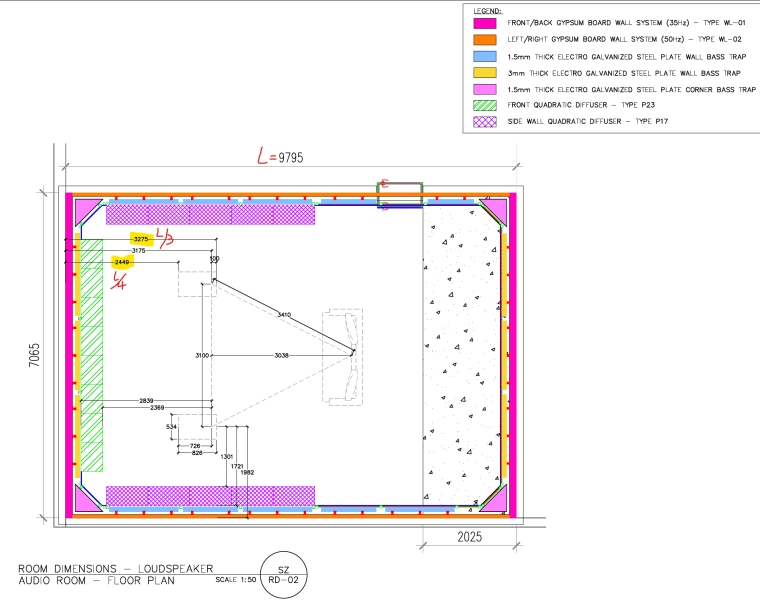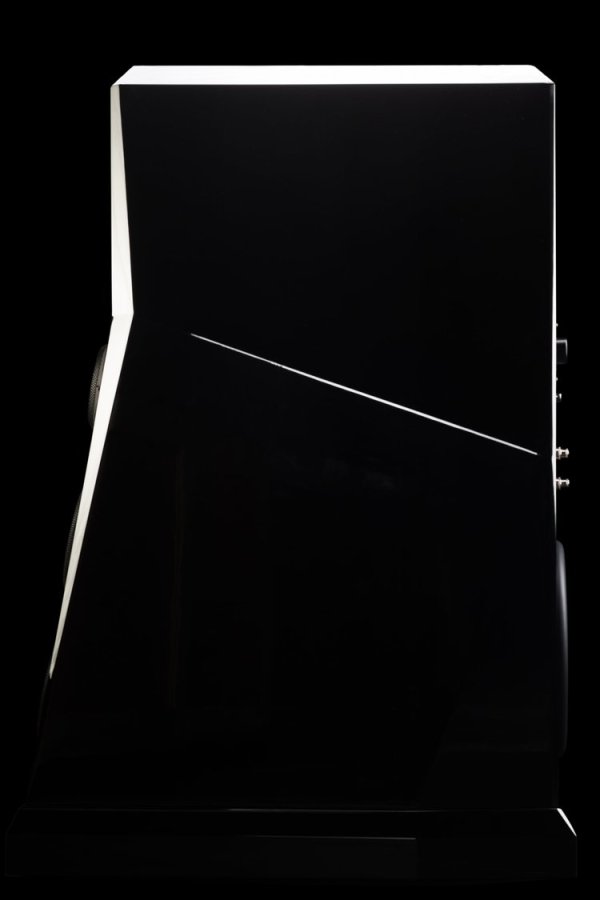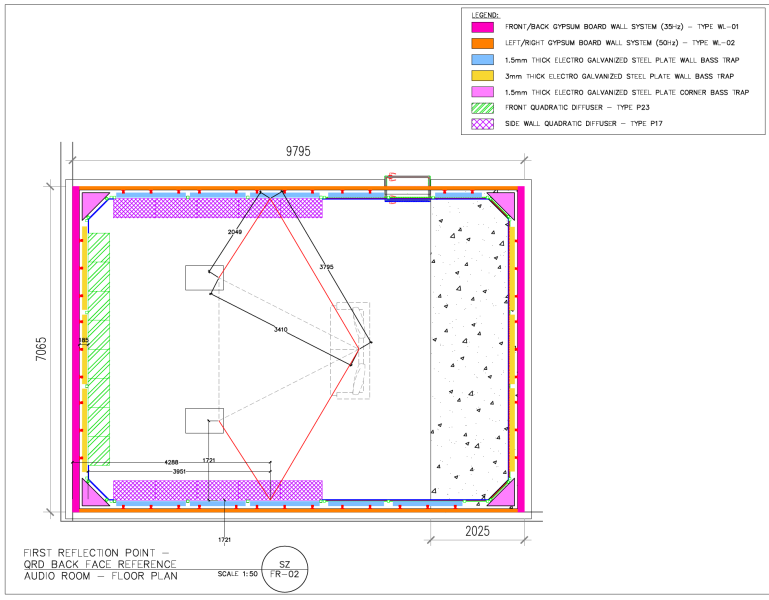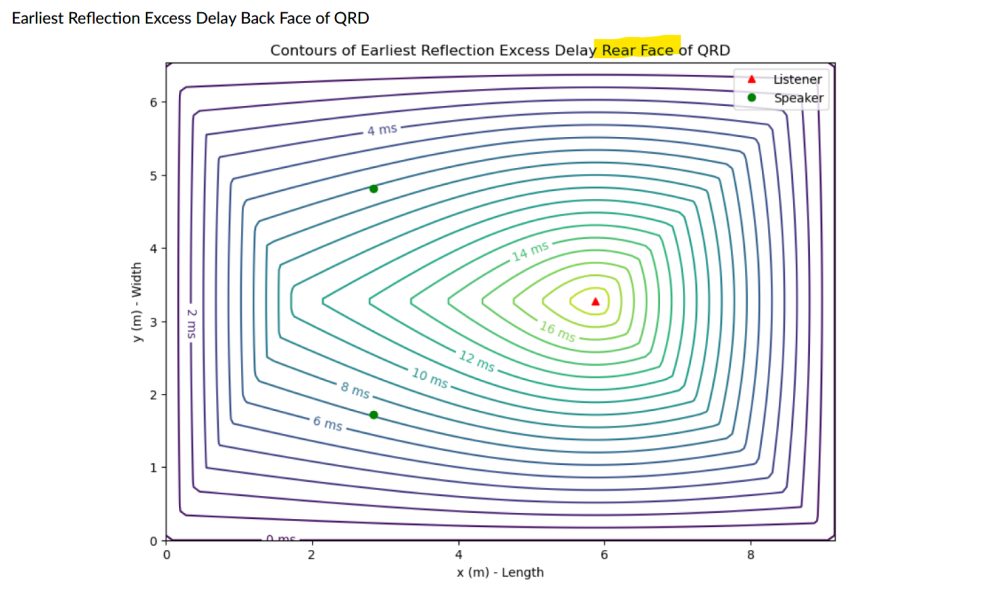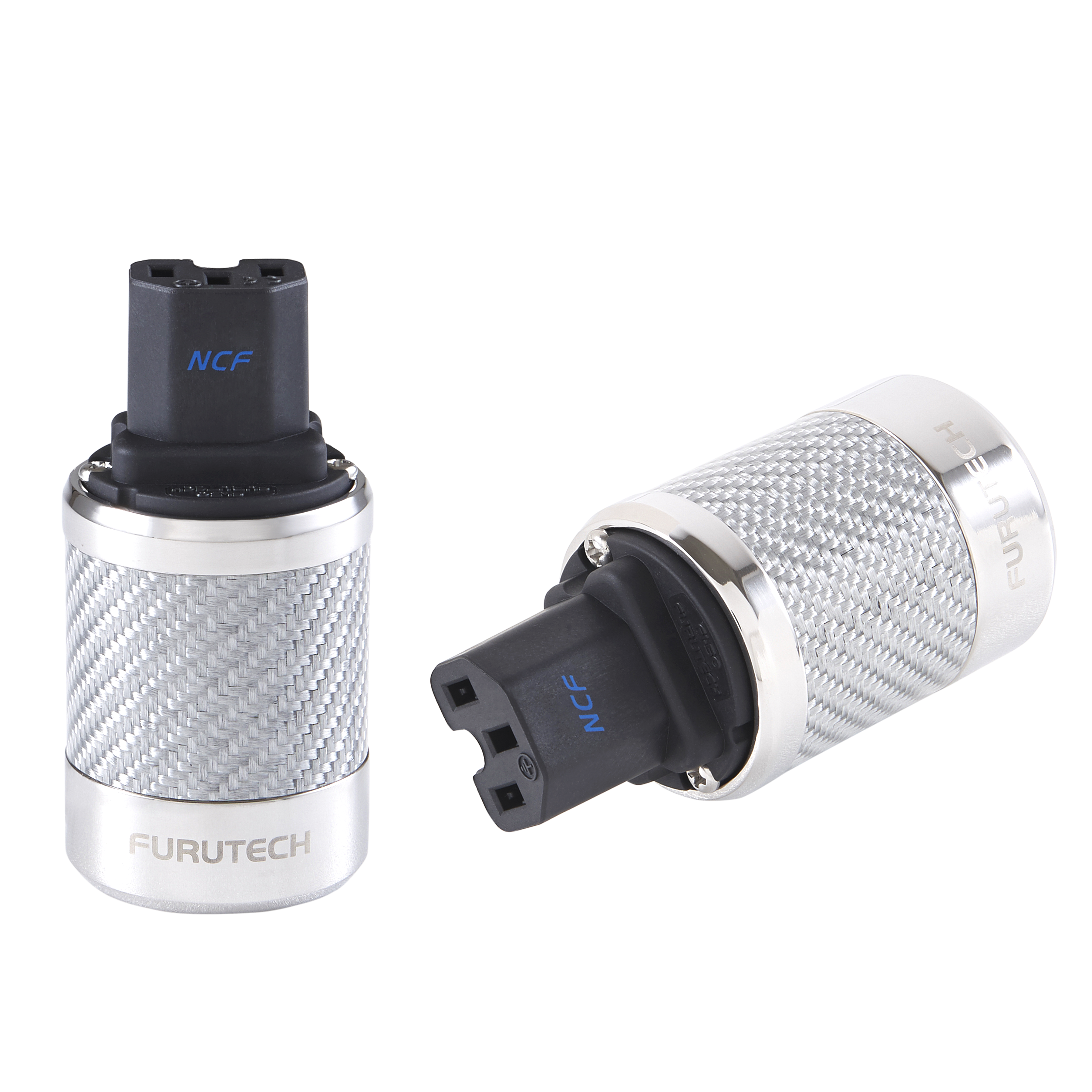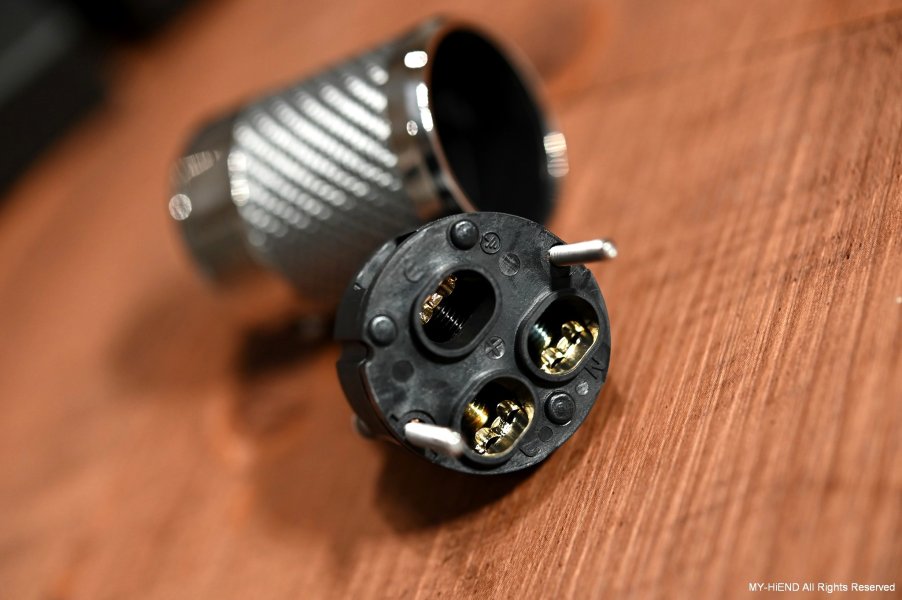The purpose is to understand the principle of 1st reflections, as stated by the law of reflection, ie. that the angle of reflection is always equal to the angle of incidence. In other words, the most direct reflection with the shortest path length between the speaker and the listening position will have the highest amplitude and arrive the soonest, hence will be the most audible and significant influence.
Markus and Phil - I've posted the charts below before, but I'll do so again, as they will (again) explain what happens to different sound frequencies when they strike the P17 QRDs at 45 degrees. Sound from the loudspeaker does NOT have to hit straight-on, at zero degrees, with a "direct frontal hit" for the QRDs to do their job. "Complicated" diffusion patterns are just fine, as long as they have the following four characteristics.
Since the Von Schweikert Ultra 9 has a very broad and uniform directivity index, acoustic energy launched into the side hemisphere will strike the P17 QRDs and diffuse back into my listening room, creating a nice ambiance or "air" to the presentation, through the following "contributions":
1) delayed by 5 to 7 milliseconds (between 5 and 30ms is optimal to utilize the positives of the Hass Effect - will explain later).
2) attenuated in amplitude, uniformly across the broad frequency spectrum without significant hot or cold spots (unlike foam absorbers)
3) scrambled in the time domain across the broad frequency spectrum, due to the different well depths in the QRDs
4) primarily originating from 60-degrees left of center, and right of center, for a spread of 120 degrees
Scattering, diffusing, and (slightly) delaying direct sounds from the loudspeakers are WONDERFUL ingredients to add to the direct sound!!! Yes, TRIPLE exclamation marks.
View attachment 147824
View attachment 147826




